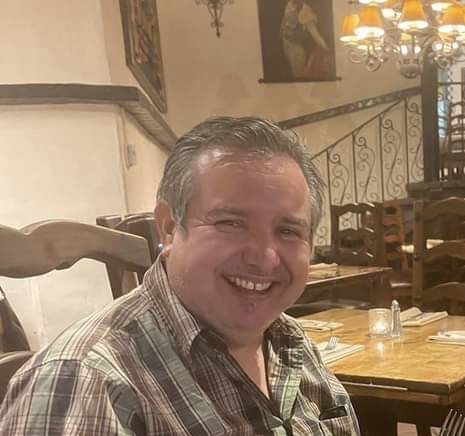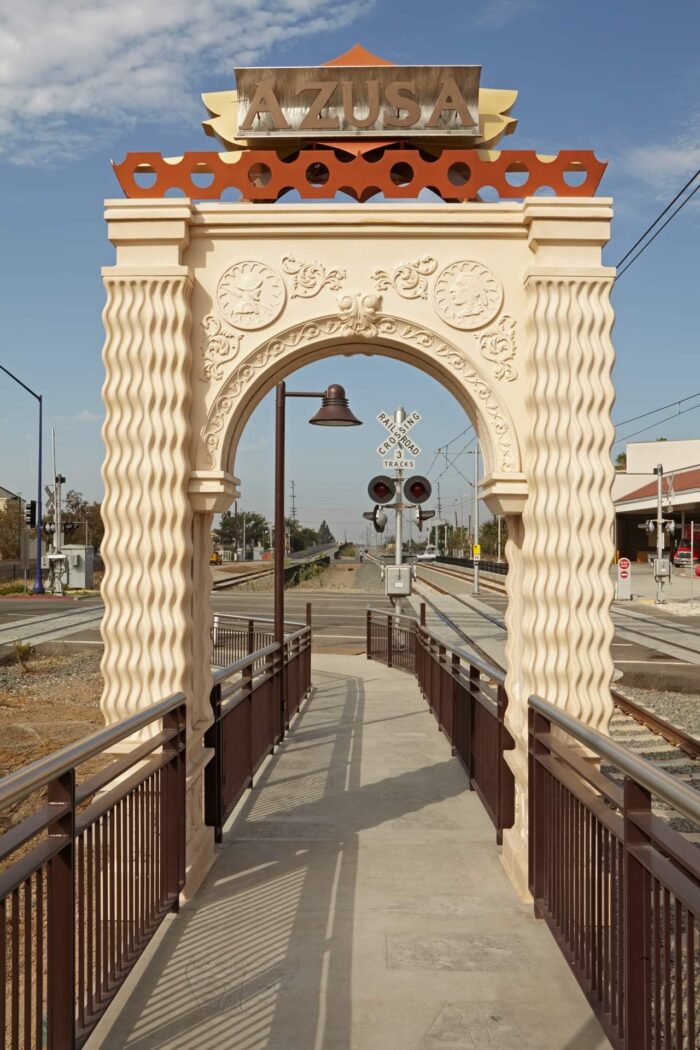Alumni Spotlight: Raymond Gutierrez (Arch, ’97)
For the past 25 years, the work of Raymond Gutierrez (Arch, ’97) has bridged architecture, design, public art, and metal fabrication. A guiding philosophy in his career has been how culture creates design — a concept that took hold for Gutierrez during his college years at Woodbury.
“I had a very idyllic experience at Woodbury,” Gutierrez states. “I met a group of pivotal people who helped shape my outlook on architecture, art, and culture and are mentors and colleagues today. I have to say, if it wasn’t for my time at Woodbury, I may be a completely different architect from who I am today.”

After graduating, Gutierrez initially worked for a few firms, including Charles Walton & Associates (CWA) and Adobe LA, a group of architects, artists, and designers that did projects addressing the values of Los Angeles’ evolving multicultural population. “The mission of ADOBE LA,” according to their archive “was to create and produce public art and architecture, create a discourse that responds to the social and cultural needs of the Latino communities in Los Angeles, to document that landscape through diverse media (film, photography, art), and finally to critically analyze issues of representation, vernacular architecture and popular culture through exhibitions, writing, teaching, publications and community activism.”
Raymond’s work with Adobe LA helped form his values around design and set the groundwork for his professional life.
In the first few years of his career, two pivotal things happened: 1) He was offered a major freelance opportunity, and 2) his father’s health declined quickly, and he needed to be a part-time caretaker. Raymond found that the freelance architecture projects allowed him to both pursue architecture and still be able to take care of his ailing father.
The freelance project was for a Metro public art installation at the Allen Street Gold Line Station in Pasadena. The artist Michael Amescua created a series of steel panels in the tradition of papel picado, or punched paper, that were painted a deep forest green with brushed stainless steel and red enamel accents. Gutierrez’s role in the project was to assist in the structural design and to make sure that Amescua’s steel panels integrated smoothly into the station’s architectural design. Amescua and Gutierrez worked so well together that 20 years later, they are still collaborating.
Gutierrez’s early years with CWA taught him the necessary skills to fuse public art and architecture. While he was at CWA in the early 2000s, the great Los Angeles artist Wayne Healy from the famed East Los Streetscapers Collective was doing a public art project with CWA and the Burbank Public Library that involved a sculpture installation at Burbank’s Buena Vista Library.

Gutierrez observed CWA’s process of coordinating and engineering between the library, architecture, and city to make the piece a concrete reality. Healy’s 2002 piece, “Read, Reach and Realize,” is a metal sculpture in front of the library’s entrance highlighting the importance of reading in our world. Though the artist is the primary creator of any public art piece, the architect’s role involves behind-the-scenes elements like making sure all the technical logistics line up. In many public art projects, the architect is needed to make the piece functional. Witnessing the process of installing Healy’s piece at the library showed Gutierrez what it takes to make public art possible — and how architecture plays a part in that.
Following his first freelance project with Michael Amescua at the Metro station, Gutierrez has gradually mastered coordinating public art and architecture, completing over a dozen projects together at civic sites like parks along the LA River, a traffic island near Hollywood Way just north of Woodbury, 70 light poles in Chinatown, and a decorative fence and gate at the Los Angeles Zoo. Their best-known work is probably the East Los Angeles Civic Center, where Amescua created two portals of decorative metal that greet commuters entering the site. Gutierrez has also assisted other artists’ public art projects, including Sonia Romero’s tile mosaic murals at the Belvedere Aquatic Center and Jose Antonio Aguirre’s tile mosaic murals in Azusa.
Gutierrez has carved out an alternative architectural career over the last 25 years, becoming successful on his own terms. He currently has several more projects in production, including a customized Additional Dwelling Unit (ADU). “It combines decorative metal designs, architecture, and urban design in one project,” he says. “It basically takes an ADU and incorporates decorative cut metal as functional art panels and incorporates it into the architecture.”
He credits his time at Woodbury in the 1990s as the start of it all, especially because of the leadership of the former chair of the Architecture Department, Professor Geraldine Forbes Isais.
“I think it’s important to follow your instincts and heart,” Gutierrez confesses, “and to see how things develop. I was always told this is a career for old white men, and although I am proud to prove them wrong, I do respect the time involved in developing the ideas and projects while also navigating technology and a changing career. It’s all been very gradual and unplanned, but I’m very thankful for the journey.”
Last Updated on May 2, 2023.